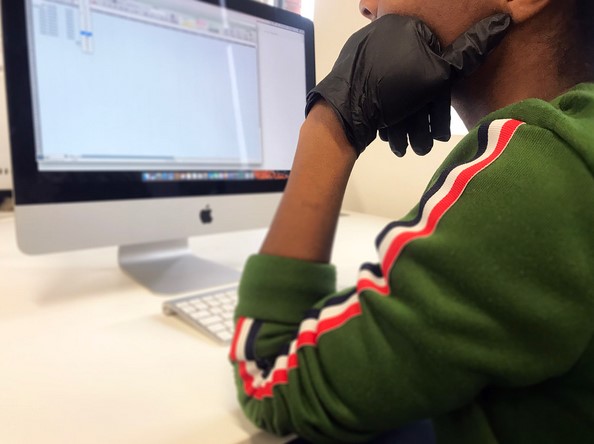When you start an e-commerce project, you should prepare yourself to encounter very specific types of criminal activity online. As diverse as online fraudsters are, their activity mostly fits into several types. To efficiently prevent fraud, you must know what these types are and how to deal with each of them.
She Took My Card and She Took My Money…
The most popular sort of credit card fraud is identity theft when someone uses real card details to make purchases at the owner’s expense. This may mean the physical card stolen from its owner as well as its details, such as number, expiration date, and CVV code. When supplemented by details like email, phone number, SSN, and so on, this stolen identity is hard to tell without measures taken with specialized services. And when the real owner learns, it may be too late.
What can help you to decline such a transaction is the usage of databases on customer behavior and device fingerprints. If someone is making a non-typical purchase in a non-typical time from a non-typical location, it’s suspicious by default. Same goes for them using a new device, especially if other cards are being used from the same device or IP address at the same time. With AI-powered security services connected to your store will make real-time decisions whether to accept or decline a transaction that looks suspicious.
Friends Will Be Frauds
Friendly fraud is usually not strictly a fraud but rather a misuse of chargeback claimed by your customer with no malicious intent. For example, they frankly don’t remember placing an order or suppose a child has accessed the card for a purchase. It may also be provoked by delivery issues.
The best way to prevent this sort of fraud is to collect as many details of the purchase as possible and place it on the table during the dispute. If the package tracking shows that the purchase has been delivered and received, or the notification sent to the customer contains the description of the store and the purchase, or the delivery address is correct and the time is typical for the client, any of these may indicate that the purchase is made correctly and processed right. This can help you win the dispute and not be charged back.
Of course, this involves some special partnerships with payment processors and security providers. Luckily (if we may say so), the problem got so big recently that there are many services specializing in preventing this sort of fraud.
I Always Pheel Like Somebody’s Phishing Me
There are various ways a store can become a victim of phishers. The most obvious way is your store being imitated. Customers are convinced to visit your fake site, so they send their money to the wrong recipient and blame you for not delivering their purchases. More than that, they leave their card information and personal details, so their identities become vulnerable and can be attacked again. And yes, they will blame you.
What can you do against it? First of all, report any suspicious sites that resemble yours too much. Second, track your customers’ feedback: they may be the first to report a phishing attempt. Third, monitor your visitors, especially if some of them get redirected from your site elsewhere immediately.
Another way of using phishing is someone trying to contact you, disguised as a bank official, trying to get information on some of your customers from you. Not that this is completely prohibited. But the persons trying to do this should be authorized by authorities or by financial organizations they claim to represent.
Copycat Tryna Shop My Manner
The triangulation scheme, quite an exquisite one, is designed to phish card numbers and extra data from customers. An online shop is created that offers popular goods (physical or digital) for incredibly bargain prices. They seem unpalatable, and they are. The customer that’s sold on it will pay with their credit card, and what’s then?
If the store is a complete fake, the customers will receive nothing, and probably their card details will be used. But it’s not the case in question. With triangulation, the customer indeed receives the ordered item. The explanation is the fraudster buys it somewhere else and ships it to the customer, forming the impression of a decent store. A satisfied customer will advertise this cave of wonders among friends and relatives.
After a while, the fraudsters start using the stolen card data to make purchases elsewhere. Probably they buy the actual goods with the cards they have stolen earlier. Though the victim is now aware of the trouble, hardly will they associate it with that great purchase they had not so recently made. The fatal transaction will be lost among others and hardly cause any suspicion.
Well, your store does not become the direct victim of this sort of fraud. But getting involved in it (even as an unaware partner) is no good either. In addition, it’s your customers that suffer from that, so they may get disappointed about the very idea of online shopping. And it’s your store they would not visit now, so you’re still on the losing side.
What can you do? Monitor prices of the goods you sell. These fake stores are usually well advertised, so it won’t be hard to detect sites that offer the same goods for incredibly low prices — maybe they will be actually bought from you. Not only can you report potential fraud to authorities, but also keep your customers aware of this sort of risk. And no, it has nothing to do with unfair competition as it might seem — it’s crime prevention.
Aware Is Armed
Well, to be aware is to be armed against Internet fraudsters and ready to oppose them. To let your friends know of this, share this on your Facebook or Twitter page. We’d also like you to share your story of opposing online fraud down here in the comments.
Related Posts












